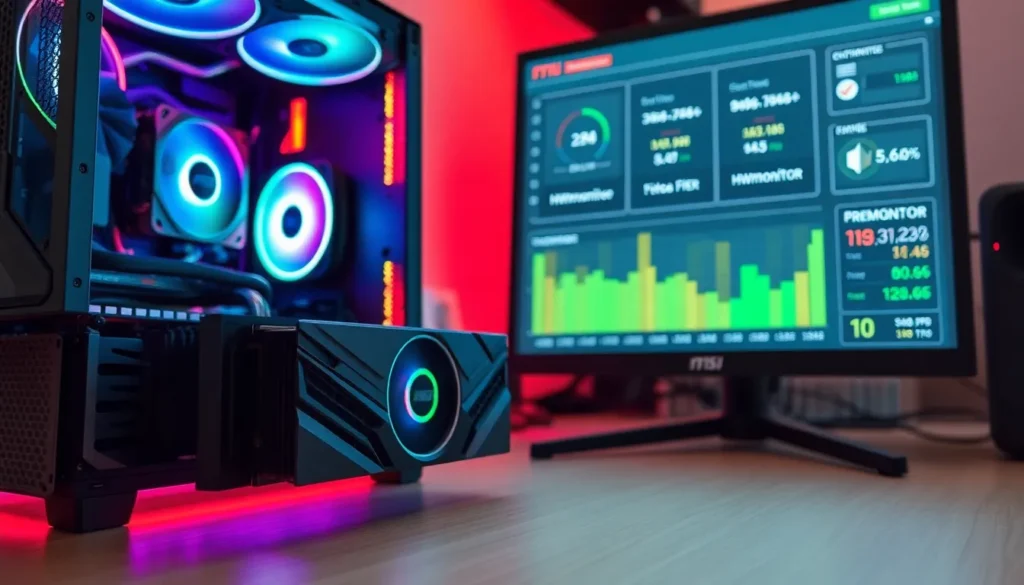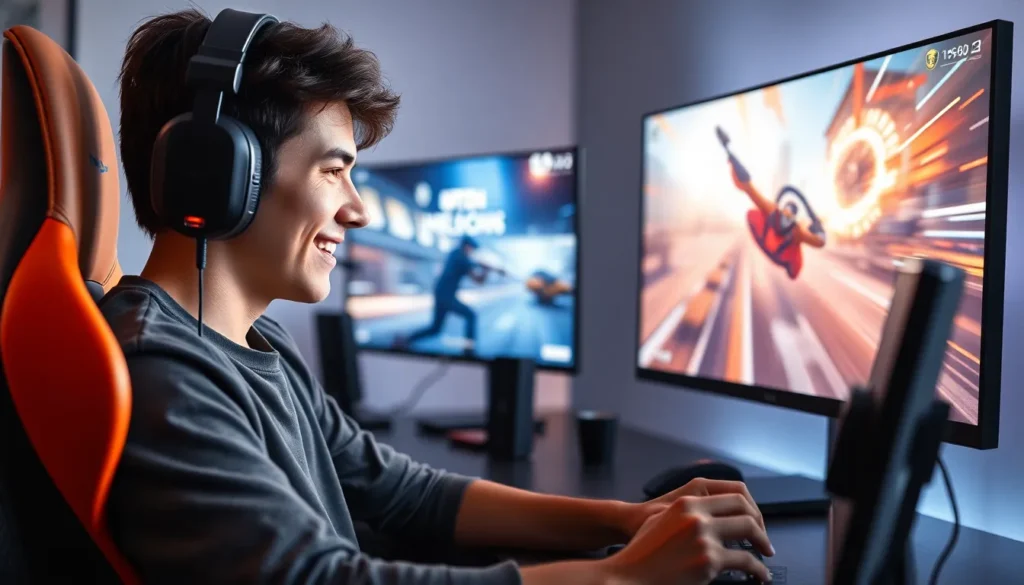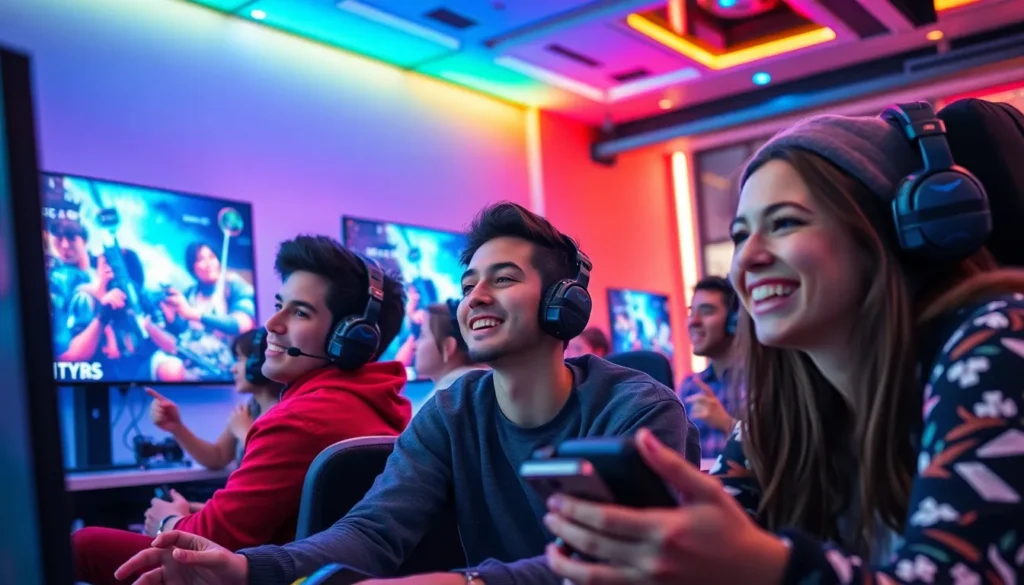In the thrilling world of League of Legends, the MMR system reigns supreme, determining who’s worthy of climbing the ranks and who’s destined to face the dreaded bronze abyss. It’s like a matchmaking sorcerer wielding a mystical wand, conjuring battles between players based on their skill levels. But let’s be honest—understanding this arcane system can feel like deciphering ancient hieroglyphs while blindfolded.
Whether players are trying to boost their rank or just figure out why their friend with a 0-10 record still gets matched with them, the MMR system is a hot topic. It’s not just about winning games; it’s about navigating the complex web of matchmaking that keeps players on their toes. Get ready to dive into the enchanting yet baffling realm of MMR, where every match could be a step toward glory or a hilarious misadventure.
Overview of League MMR System
The League MMR system influences player rankings and matchups based on their skill levels. Understanding this system clarifies many of the complexities players encounter during their gaming experience.
Definition and Purpose
MMR, or Matchmaking Rating, represents a numerical value indicating a player’s skill level. This value affects matchmaking by pairing players of similar skills in competitive scenarios. Each player’s MMR serves to establish fair and balanced games, enhancing the overall gaming experience. Higher MMR leads to tougher opponents and better rewards, while lower MMR connects players with more evenly matched experiences. This structured ranking system promotes skill development, fostering improvement and competitiveness among players.
How MMR is Calculated
Calculating MMR involves analyzing player performance in matches. Wins and losses impact a player’s rating significantly, with each match outcome leading to adjustments in MMR. Game mechanics account for various factors, including individual contributions and team performance. The Elo rating system also plays a role, prioritizing recent match data to reflect current skills accurately. As players engage in more games, their MMR evolves, reflecting their ongoing development within the competitive landscape.
Components of the MMR System

The MMR system consists of several key components that shape the matchmaking experience. Understanding these components helps players navigate their ranked journey more effectively.
Ranked Tiers and Divisions
Ranked tiers and divisions categorize players based on skill. There are multiple tiers, including Iron, Bronze, Silver, Gold, Platinum, Diamond, Master, Grandmaster, and Challenger. Each tier contains four divisions, ranking from IV to I, allowing for precise skill differentiation. Players climb through these tiers by winning matches and earning LP (League Points). Moving up a division or tier typically requires accumulating a specific amount of LP, making every match crucial to progression. This system ensures players compete against opponents of similar skill levels, enhancing match quality and competitiveness.
Matchmaking Ratings (MMR) Explained
Matchmaking Ratings (MMR) serve as the backbone of the ranked system. MMR is a hidden numerical value that influences matchmaking, with higher values indicating stronger players. Ratings adjust after each match based on performance, including wins, losses, and the skill level of opponents. This dynamic adjustment accurately reflects a player’s current abilities, promoting fair matchups. Elo rating principles guide MMR calculations, emphasizing recent performance over past rankings. Consequently, a player’s MMR can evolve rapidly, allowing for continual assessment of skill development.
Impact on Gameplay
The MMR system significantly influences gameplay in League of Legends, shaping player experiences and ensuring competitive integrity.
Effects on Player Experience
MMR affects the enjoyment and engagement of players. Higher MMR players face tougher opponents, creating a sense of challenge and accomplishment with each win. Lower MMR matchmaking provides opportunities for growth as players refine their skills against similarly rated opponents. Match quality improves with MMR, leading to more balanced games. Understanding MMR allows players to set realistic expectations, which reduces frustration. In essence, the system’s feedback loop encourages continuous improvement and keeps players invested.
Influence on Competitive Integrity
Competitive integrity hinges on a fair MMR system in League of Legends. Accurate matchmaking ensures players compete against opponents of equivalent skill, maintaining balance. Rankings reflect true player abilities, essential for the success of tournaments and organized play. Ranked tiers rely on this integrity, as players advance based on genuine performance. An equitable MMR system enhances trust among the community, fostering a healthy competitive environment. Consistency in MMR calculations supports fair play and validates player achievements across all ranks.
Common Misconceptions
Many players hold misconceptions about the MMR system in League of Legends. Understanding these myths clarifies how rankings function and how they affect gameplay.
Debunking Myths About MMR
One common myth suggests players can influence their MMR solely by winning games. Winning impacts MMR, but performance metrics also play a critical role. A player might win several matches but continue to face challenging opponents if their performance was subpar. Another misconception asserts that grouped players alter MMR dynamically during matchmaking. This statement holds some truth; however, the system calculates individual ratings separately. Lastly, some believe MMR resets every season. MMR does adjust, but it does not reset unless specific conditions apply.
Understanding Variance and Performance
Variance in MMR includes fluctuations based on individual game outcomes. Players often underestimate how performance affects ratings beyond just wins and losses. Each match contributes to assessing skills, with the details of those performances being vital. Losing a match against a top-tier opponent might result in less MMR loss than dropping a match against a lower-ranked player. Performance fluctuations can also create mismatched games. To illustrate, a high-skill player may experience temporary downturns affecting MMR more dramatically than they would for someone with a lower skill level. Hence, understanding performance indicators is crucial for grasping MMR implications.
The League MMR system is a vital aspect of the game’s competitive landscape. It not only determines player rankings but also enhances the overall match experience by fostering balanced gameplay. As players navigate through the intricacies of MMR, they can better understand their skill levels and the dynamics of matchmaking.
With a structured approach to ranking and performance evaluation, the MMR system encourages growth and skill development. Players can enjoy a more rewarding experience as they face opponents of similar capabilities while striving for improvement. Embracing the MMR system ultimately leads to a more engaging and competitive environment, benefiting both casual gamers and seasoned veterans alike.








